“Why Has My Pulse Flow Meter Sensor Failed?”

The majority of flow meters with a pulse output use a rotating element with internal magnets. These magnets trigger a solid-state sensor giving a pulse output proportional to the liquid flow rate.
Titan Enterprises Ltd, who has been designing and manufacturing flowmeters for over 40 years, explains some of the reasons why these sensors might fail and what can be done to prevent damage that can lead to costly repairs and process downtime.
High quality Hall effect sensors are typically used within Titan’s pulse precision flow measurement devices. The sensors operate between 4.0Vdc and 30Vdc, however, there are a number of scenarios that will cause the Turbine and Oval Gear flow meters to fail, even though the installer believes the flow device has been installed correctly.
If a flow sensor fails, it may be for one of the following reasons:
- Incorrect Wiring: Care must be taken when wiring the sensor power supply and pulse output of the flowmeter. The sensor is unable to cope with incorrect wiring – reverse polarity or short circuiting can cause the sensor to fail suddenly, completely and permanently.
- Unregulated Power Supply: Exceeding the maximum 30Vdc to the Hall Effect sensor will damage the unit. A good quality regulated DC power supply is recommended for powering a pulse flow meter.
- Electrical Interference / Voltage Spikes: Other connected equipment containing inductors (coils), or electromagnetic components (such as solenoid valves or pumps) can produce high voltage spikes when switching. These spikes can be a hundred to thousands of volts and if on the same circuit, will damage the flowmeter sensor beyond repair.
Electrical interference can also occur even without a direct connection if cabling is routed close to high-power equipment.
A failure mode that is commonly seen, is where a simple solenoid valve is operated on the same power supply as the flowmeter. When the solenoid de-energises in 1ms it produces a spike of 100s of Volts. Some of this voltage spike feeds through to the sensor, momentarily exceeding the 30Vdc maximum of the sensor causing it to fail.
What can be done to prevent catastrophic failures in flow measuring systems?
Neil Hannay, Senior R&D Engineer with Titan Enterprises observes: “The majority of damage tends to be caused during the installation of the flowmeter. Minor errors can result in a non-operational meter before the customer has even started, leading to costly repairs or replacements, as well as process downtime, that can be avoided.”
Titan Enterprises produce over 70,000 flowmeters each year that are used in a wide variety of industries, processes and applications, so troubleshooting for customers is not uncommon, particularly for those who are unfamiliar with Titan’s flow metering products.
Neil says: “Titan provides written data and instruction sheets with all our flow meters, and we have also published some installation tutorial videos to help our customers and prevent any mis-wiring that can damage the units.”
The following installation checklist will go a long way to preventing common causes of pulse flow meter sensor failure:

For further information on Titan’s flowmeter and instrumentation range or to discuss any process and technical issues, please contact Titan Enterprises on +44 (0)1935 812790 or sales@flowmeters.co.uk. Visit our website at www.flowmeters.co.uk/
Drawing upon over 40-years of flowmeter innovation – Titan Enterprises Ltd is a leading manufacturer of high-performance flow measurement solutions, including the Atrato ultrasonic flowmeter, Oval Gear flowmeters, low flow Turbine flow meters and a flow instrument range. Titan’s company philosophy of “pushing the envelope by trying to do things a little different and better” has resulted in sales of over 2 million flowmeters and components into 50 countries worldwide and a repeat purchase percentage of 95%. All flow meters produced by Titan Enterprises are designed and manufactured to ISO9001 and calibrated to an uncertainty of ±0.25%.
 Instrumentation Monthly Test | Measurement | Control
Instrumentation Monthly Test | Measurement | Control








 From 12th to 13th October 2022, the 10th
From 12th to 13th October 2022, the 10th 
 “In the early days we made our own flow rigs from a laboratory balance with control electronics provided by a friend,” Trevor recalls, “and we used low-cost aluminium tooling until we could afford fully hardened steel ones.”
“In the early days we made our own flow rigs from a laboratory balance with control electronics provided by a friend,” Trevor recalls, “and we used low-cost aluminium tooling until we could afford fully hardened steel ones.” Titan’s R&D is primarily driven by customers looking for solutions that will support their specific applications and deliver more efficient, reliable and accurate results. R&D projects could be anything from testing new materials for longer life, chemical inertness, robustness, testing under high pressure or temperature or software development. Design improvements and technological advancements are focused around finding innovative solutions for our OEM customers, pushing the boundaries of both the physical properties and performance of the products.
Titan’s R&D is primarily driven by customers looking for solutions that will support their specific applications and deliver more efficient, reliable and accurate results. R&D projects could be anything from testing new materials for longer life, chemical inertness, robustness, testing under high pressure or temperature or software development. Design improvements and technological advancements are focused around finding innovative solutions for our OEM customers, pushing the boundaries of both the physical properties and performance of the products. Some of Titan’s most popular flow meters have been born out of collaborations. “We have a proud history of working with some of industry’s key players, such as Coca Cola Enterprises Ltd, RS Components and Vianet, to industry specialists like Formula 1, Paxman Coolers, Stored Crop Conservation and Green Fuels,” Trevor says. “Our USP is our flexibility, adaptability and ability to work with customers to understand their applications and find workable solutions.”
Some of Titan’s most popular flow meters have been born out of collaborations. “We have a proud history of working with some of industry’s key players, such as Coca Cola Enterprises Ltd, RS Components and Vianet, to industry specialists like Formula 1, Paxman Coolers, Stored Crop Conservation and Green Fuels,” Trevor says. “Our USP is our flexibility, adaptability and ability to work with customers to understand their applications and find workable solutions.” M12 connectors are circular connectors with a 12 mm locking thread and have become the standard for use in factory automation applications, they come in many different shapes and sizes, when you select a cable it is important to choose the right length, the correct number of pins, jacket material, and just as importantly the right coding for the application.
M12 connectors are circular connectors with a 12 mm locking thread and have become the standard for use in factory automation applications, they come in many different shapes and sizes, when you select a cable it is important to choose the right length, the correct number of pins, jacket material, and just as importantly the right coding for the application. There are many different types of coding for instrumentation cables, but why are they coded, what are they all for and where should they be used?
There are many different types of coding for instrumentation cables, but why are they coded, what are they all for and where should they be used?
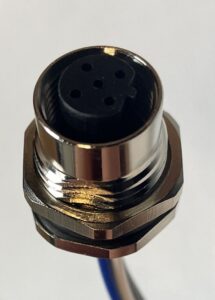
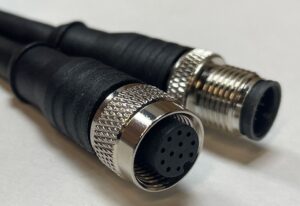
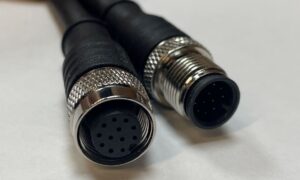
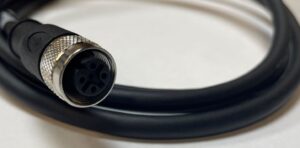

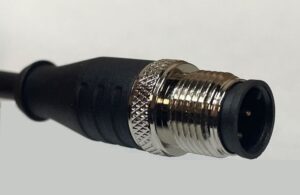
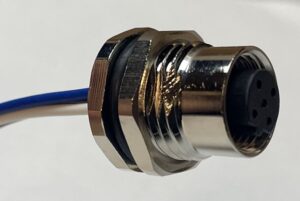
 Specialist enclosures manufacturer ROLEC has launched advanced new aluDOOR – the next generation of hinged-lid housings for harsh outdoor and indoor industrial applications.
Specialist enclosures manufacturer ROLEC has launched advanced new aluDOOR – the next generation of hinged-lid housings for harsh outdoor and indoor industrial applications.

